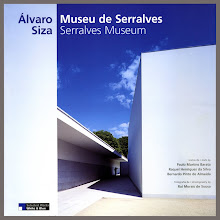..
+Canon+EOS+1n+%2B+EF+2,8+70-200mm+L,+Lisboa,+Central+Tejo,+Julho+1996+007+copy.jpg) I have yet to meet a photographer who, in a way or another, doesn't feel fascinated by old and abandoned industrial sites.
I have yet to meet a photographer who, in a way or another, doesn't feel fascinated by old and abandoned industrial sites.
Doubtless, there seems to be a certain kind of magic inherent to such locations, rendering very inspiring and photogenic material for many creative minds.
In small, medium or large format, analogic or digital, you will be rewarded with some appealing images if you enter such an environment with open eyes and a curious mind.
Some others prefer to simply use it as a backdrop for their creativity: fashion photographer Peter Lindbergh has produced some memorable shots in those places where the machines have long stood still.
+Canon+EOS+1n+%2B+EF+2,8+70-200mm+L,+Lisboa,+Central+Tejo,+Julho+1996+001+copy.jpg)
+Canon+EOS+1n+%2B+EF+2,8+70-200mm+L,+Lisboa,+Central+Tejo,+Julho+1996+002+copy.jpg)
+Canon+EOS+1n+%2B+EF+2,8+70-200mm+L,+Lisboa,+Central+Tejo,+Julho+1996+003+copy.jpg)
I had just switched my main 35mm SLR equipment from Nikon to Canon when I made these shots, way back in 1996. I had decided to "modernize" and go auto-focus, with the help of some exposure automation, for my "bread and butter photography".
In those times I was exceptionally busy, so I thought that it was maybe clever to simplify my life a little and leave some heavier equipment in the studio: for many assignments (when transparency size was not of primordial importance) I started leaving the Hasselblad and brought the Canon stuff along. So I also could save on film expenses and rescue us from too many E-6 developments, which we used to do by ourselves.
I had already enough jobs to do in 9x12/4x5", my back was needing to take a break!
+Canon+EOS+1n+%2B+EF+2,8+70-200mm+L,+Lisboa,+Central+Tejo,+Julho+1996+004+copy.jpg)
+Canon+EOS+1n+%2B+EF+2,8+70-200mm+L,+Lisboa,+Central+Tejo,+Julho+1996+005+copy.jpg)
+Canon+EOS+1n+%2B+EF+2,8+70-200mm+L,+Lisboa,+Central+Tejo,+Julho+1996+006+copy.jpg)
+Canon+EOS+1n+%2B+EF+2,8+70-200mm+L,+Lisboa,+Central+Tejo,+Julho+1996+008+copy.jpg)
All shots with Canon EOS-1n + EF 70-200mm f2.8 L in Ektachrome film.
(older version, without Image Stabilization)
Close-focus capability with extension tube EF-12.
It was not an option then, but I never missed Image Stabilization, as you can find in the newer model (the photographs above were shot with the camera on a solid tripod, making IS unnecessary).
In any case, there is still a strong argument in favor of the newer lens: it is weather-sealed!
You could find very wet conditions where I used to live before I have moved to Montemor-o-Novo, so my lens got some nice fungus inside, after I had it at home for some monthes...
I suspect that weather seal could have avoided it.
In any case, stupid me! I should have known better...
+Canon+EOS+1n+%2B+EF+2,8+70-200mm+L,+Lisboa,+Central+Tejo,+Julho+1996+007+copy.jpg) I have yet to meet a photographer who, in a way or another, doesn't feel fascinated by old and abandoned industrial sites.
I have yet to meet a photographer who, in a way or another, doesn't feel fascinated by old and abandoned industrial sites. +Canon+EOS+1n+%2B+EF+2,8+70-200mm+L,+Lisboa,+Central+Tejo,+Julho+1996+001+copy.jpg)
+Canon+EOS+1n+%2B+EF+2,8+70-200mm+L,+Lisboa,+Central+Tejo,+Julho+1996+002+copy.jpg)
+Canon+EOS+1n+%2B+EF+2,8+70-200mm+L,+Lisboa,+Central+Tejo,+Julho+1996+003+copy.jpg) I had just switched my main 35mm SLR equipment from Nikon to Canon when I made these shots, way back in 1996. I had decided to "modernize" and go auto-focus, with the help of some exposure automation, for my "bread and butter photography".
I had just switched my main 35mm SLR equipment from Nikon to Canon when I made these shots, way back in 1996. I had decided to "modernize" and go auto-focus, with the help of some exposure automation, for my "bread and butter photography".+Canon+EOS+1n+%2B+EF+2,8+70-200mm+L,+Lisboa,+Central+Tejo,+Julho+1996+004+copy.jpg)
+Canon+EOS+1n+%2B+EF+2,8+70-200mm+L,+Lisboa,+Central+Tejo,+Julho+1996+005+copy.jpg)
+Canon+EOS+1n+%2B+EF+2,8+70-200mm+L,+Lisboa,+Central+Tejo,+Julho+1996+006+copy.jpg)
+Canon+EOS+1n+%2B+EF+2,8+70-200mm+L,+Lisboa,+Central+Tejo,+Julho+1996+008+copy.jpg) All shots with Canon EOS-1n + EF 70-200mm f2.8 L in Ektachrome film.
All shots with Canon EOS-1n + EF 70-200mm f2.8 L in Ektachrome film.+Minolta,+Linha+do+Corgo,+1978+001+copy.jpg)
+Minolta,+Linha+do+Corgo,+1978+019+copy.jpg)
+Minolta,+Linha+do+Corgo,+1978+010+copy.jpg)
+Minolta,+Linha+do+Corgo,+1978+005+copy.jpg)
+Minolta,+Linha+do+Corgo,+1978+006+copy.jpg)
+Minolta,+Linha+do+Corgo,+1978+008+copy.jpg)
Minolta,+Linha+do+Corgo,+1978+011+copy.jpg)
+Minolta,+Linha+do+Corgo,+1978+014+copy.jpg)
+Minolta,+Linha+do+Corgo,+1978+014a+copy.jpg)
+Minolta,+Linha+do+Corgo,+1978+003+copy.jpg)
Minolta,+Linha+do+Corgo,+1978+002+copy.jpg)
Minolta,+Linha+do+Corgo,+1978+004+copy.jpg)
Minolta,+Linha+do+Corgo,+1978+015+copy.jpg)
Minolta,+Linha+do+Corgo,+1978+016+copy.jpg)
+Minolta,+Linha+do+Corgo,+1978+020+copy.jpg)

+copy.jpg)
+copy.jpg)
+copy.jpg)
+copy.jpg)
+copy.jpg)
+copy.jpg)